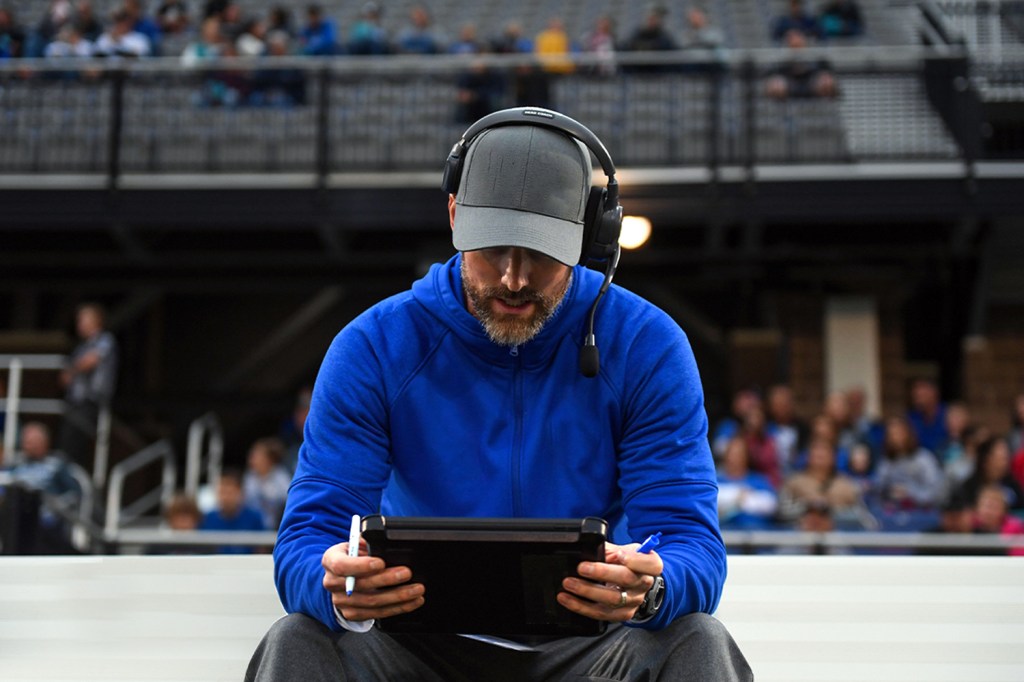Reports This Month
- How Inflation is Impacting Live Sports
- Why Sports Nutrition Is a Booming Market
- The Ongoing Evolution of Fan Engagement
One Big Thing
After September’s Consumer Price Index (CPI) number signaled hot inflation, the Federal Reserve hiked interest rates again by 75 basis points — the third consecutive 75-bp hike and the biggest in almost three decades.
As for any industry, higher interest rates present new challenges for sports business, particularly for the “sell side” — the providers, as opposed to consumers — whose current outlook is far from optimal.
To understand the value, impact, and perspective of the current rate hike cycle for sports properties, we spoke with two experts in sports management and consulting: John Page and Rayde Luis Baez.
- Page is a strategic advisor at SeventySix Capital Sports Advisory. He ran the Wells Fargo Center in Philadelphia and other arenas under the Spectra umbrella.
- Baez is the founder of The Connect and SPORTHINK, an advisory board member for the World Football Summit, and a former executive and consultant to top brands and properties like Euroleague Basketball, the New York Yankees, and Professional Bull Riders.
Here’s what they told us.
The Value
The aim of rising interest rates — which represent the cost of capital — is to reduce money circulation and expenditure in the economy by incentivizing passive capital investment.
The interest rate is vital for the sports industry because sports properties, projects, and venues require massive capital expenditures — generally from debt financing — for operations, revenue-generating activities, and investments for growth (i.e. acquisitions and developments).
- According to 2Playbook Intelligence, Europe’s top five soccer leagues (Premier League, LaLiga, Serie A, Bundesliga, and Ligue1) have an aggregated debt burden over $7.3 billion.
- Real Madrid’s Santiago Bernabeu stadium renovation — financed by loans from J.P. Morgan, Bank of America, and a pool of local banks — is estimated to cost over $770 million.
- Barcelona’s soon-to-be-started Espai Barça complex — backed by an already approved facility of almost $900 million and part of a bigger payable operation with Goldman Sachs — was reported to amount to $1.5 billion.
Given that multiple project stages, including budgeting, production design, and estimated delivery times depend on the access and cost of capital for venue constructions, developments, and renovations — interest rates contain a crucial value for different sports properties.
The Impact
Higher interest rates have several direct and indirect consequences for sports properties.
Besides increasing the cost of debt financing, higher interest rates also challenge an organization’s ability to pay back the loan and its interest payments (aka debt servicing), forcing sports properties to look for alternative funding sources to reduce borrowing costs.
For example, Barcelona had to sell a significant stake in its TV and media arm and even give up the long-time Camp Nou stadium name (now belonging to Spotify) to raise millions and avoid bankruptcy after reporting a $1.5 billion debt last year.
Depreciation in the value of a loan’s collateral and future revenue forecasts — most commonly, TV rights, sponsorships, and gameday revenues — derived from changes in the discounting rates and delivery estimations could force sports organizations to pause or even terminate projects.
Furthermore, reductions in residual budgeting increase the opportunity costs of investing in sports operations to boost the commercial appeal of a property (i.e. hiring new talent, bringing new players or experienced coaches, etc.).
Even if companies could secure fixed rates on loans in the past, changes in interest rates can also create macro-level fluctuations — namely costs of materials, technology, and concessions. These fluctuations can result in lower margins, revenue streams, and harmed budgeted costs, requiring costlier refinancing solutions.
The Outlook
The unstable world economy — with a likely energy crisis in Europe, Russia’s ongoing invasion of Ukraine, and the yet-to-cool-down inflation — doesn’t often experience an aggressive rate hike cycle mixed with a pessimistic view of the short- and mid-term.
Nevertheless, a crisis is also a window of opportunity for value creation.
- The recent depreciation in foreign currencies, namely the Euro and the British Pound, have created what seems to be a great arbitrage opportunity for undeployed private equity (PE) capital to acquire or fund projects, teams, or other sports properties in Europe.
- Similar to American businessman Todd Boehly acquiring Chelsea or RedBird Capital’s acquisition of AC Milan, new ownership groups and partnerships will be able to create synergistic opportunities across their investment portfolios, allowing for cross-regional and industrial collaborations.
- Existing tenants and local governments will have opportunities to negotiate or acquire ownership of diverse sport-related projects — diversifying their skin in the game by distributing ownership.
Changes in rates impact the sports community as a whole — even sponsors, potential naming rights partners, or season ticket holders are vulnerable.
Sports properties will have an easier time weathering the storm if they focus on value creation, relationships, and fair and equitable negotiations.

